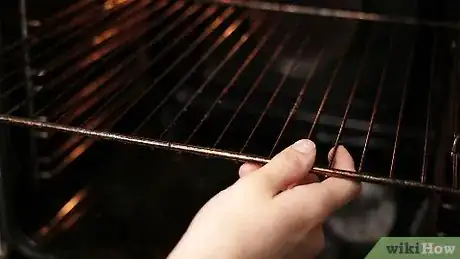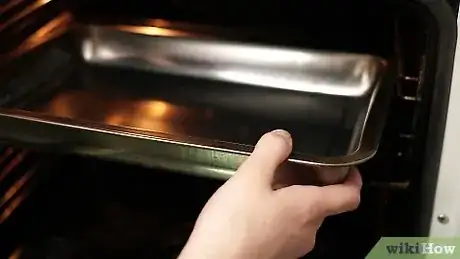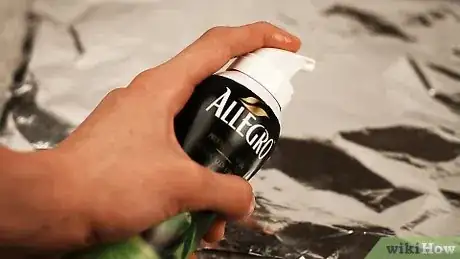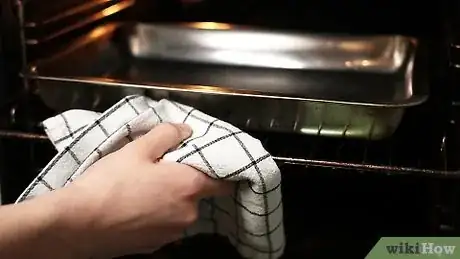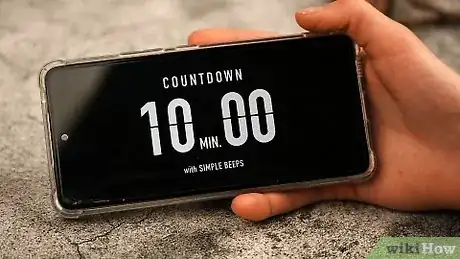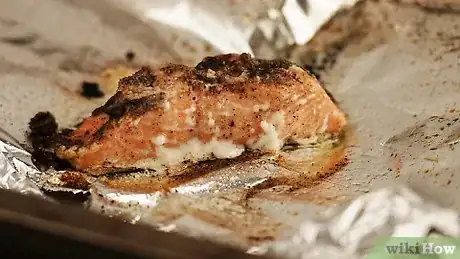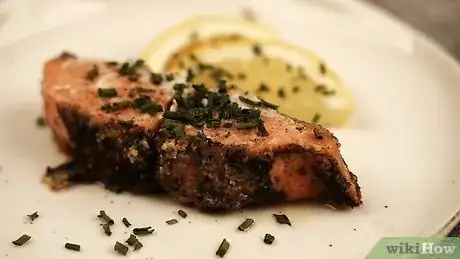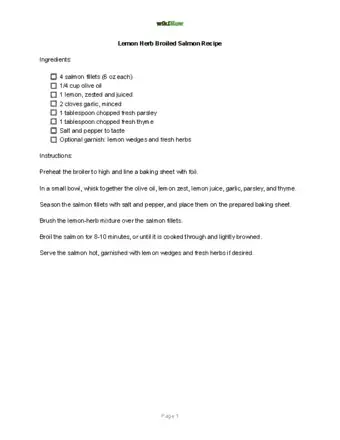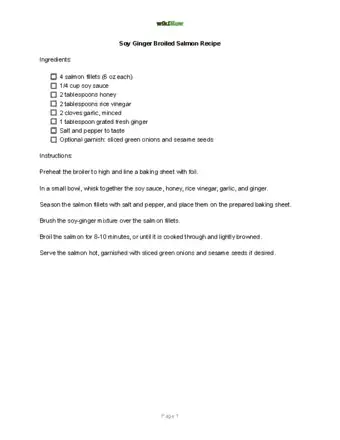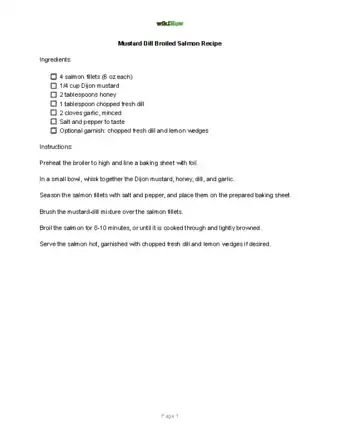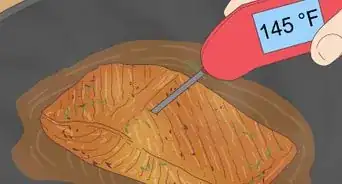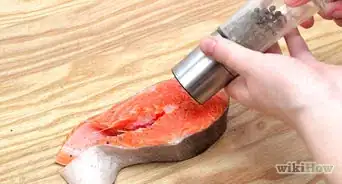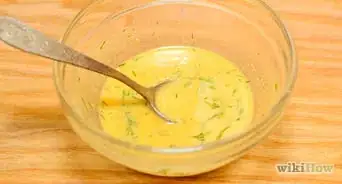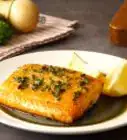wikiHow is a “wiki,” similar to Wikipedia, which means that many of our articles are co-written by multiple authors. To create this article, 17 people, some anonymous, worked to edit and improve it over time.
The wikiHow Culinary Team also followed the article's instructions and verified that they work.
This article has been viewed 523,609 times.
Learn more...
Broiling salmon is one of the quickest ways to cook this delicious and heart-healthy fish. Broiling gives the fish a crisp, caramelized crust.
Steps
-
1Set up the oven rack so the rack is 7” to 8” (18 to 20 centimeters) from the broiler. In electric ovens, the broiler is located on top. Broilers with gas ovens are normally on top or in a drawer beneath the oven.
-
2Place your broiler pan inside your oven and preheat your broiler.Advertisement
-
3Place a long strip of aluminum foil on your countertop and spray it with nonstick cooking spray.
-
4Place your salmon on top of the foil with the skin side down and the pink flesh facing up.
-
5Drizzle 1 teaspoon (5 milliliters) of olive oil on top of the salmon. Use your fingers to rub the oil into the flesh.
-
6Sprinkle 1/2 teaspoon (3 grams) of salt and 1/2 teaspoon (3 grams) of freshly ground black pepper on top of your salmon fillet.
-
7Open the oven and extend the rack that is holding the broiler pan. Make sure that you are wearing oven mitts because the broiler will be hot.
-
8Grasp the sheet of aluminum foil in both hands and place the foil and the salmon on top of the broiler pan. The hot broiler pan will ensure the salmon cooks evenly on both sides.
-
9Broil the salmon for 10 to 15 minutes. Check the fish every two minutes to ensure that it isn’t burning.
-
10Remove the salmon from the oven and place the pan on your range top or on a counter top protected with hot pads. Allow the fish to rest for a few minutes to redistribute the juices.
-
11Serve the salmon fillet on a plate with a wedge of lemon.
Broiled Salmon Recipes
Community Q&A
-
QuestionAt what temperature setting do I broil the salmon?
 QamarTop AnswererUsually your oven will have a broil button, so putting it on temperature setting is normally not needed. However, if you don't have a broil setting, it's usually at a 500 degree F (260 degree C) temperature.
QamarTop AnswererUsually your oven will have a broil button, so putting it on temperature setting is normally not needed. However, if you don't have a broil setting, it's usually at a 500 degree F (260 degree C) temperature. -
QuestionHow do I get salmon crispy?
 CaeiiaTop AnswererYou can pan fry it for a few minutes on both sides at higher heat, just don't move or touch the fish until it has crisped on one side.
CaeiiaTop AnswererYou can pan fry it for a few minutes on both sides at higher heat, just don't move or touch the fish until it has crisped on one side. -
QuestionSometimes the salmon's skin is hard to remove after baking, but other times it releases easily. What is the difference?
 Virago PhoenixCommunity AnswerGenerally the skin of a salmon is harder to remove when the fish is fresher.
Virago PhoenixCommunity AnswerGenerally the skin of a salmon is harder to remove when the fish is fresher.
Warnings
- Wash your hands after touching raw salmon.⧼thumbs_response⧽
- Salmon may contain trace amounts of mercury, which could be dangerous for a developing fetus. If you are pregnant, then speak to your obstetrician about consuming salmon or other fatty fish.⧼thumbs_response⧽
Things You'll Need
- Salmon fillet
- Broiler pan
- Aluminum foil
- Nonstick cooking spray
- Olive oil
- Salt and pepper
- Plate for serving
- Lemon wedge
References
About This Article
To easily broil salmon, adjust the oven rack so that it is 7-8 inches from the top of the oven, and place a broiler pan on the rack. Preheat the broiler and spray a large piece of aluminum foil with non-stick cooking spray. Then, place the piece of salmon with the skin side down on the foil and the pink flesh facing up. Drizzle 1 teaspoon of olive oil over top of the salmon, and add salt and pepper to taste. Once the salmon is seasoned, place the foil sheet with the salmon on the broiler pan, and broil it for 10-15 minutes. Be sure to check the salmon every 2 minutes to ensure that it isn't burning. For tips on serving the salmon after broiling, keep reading!
